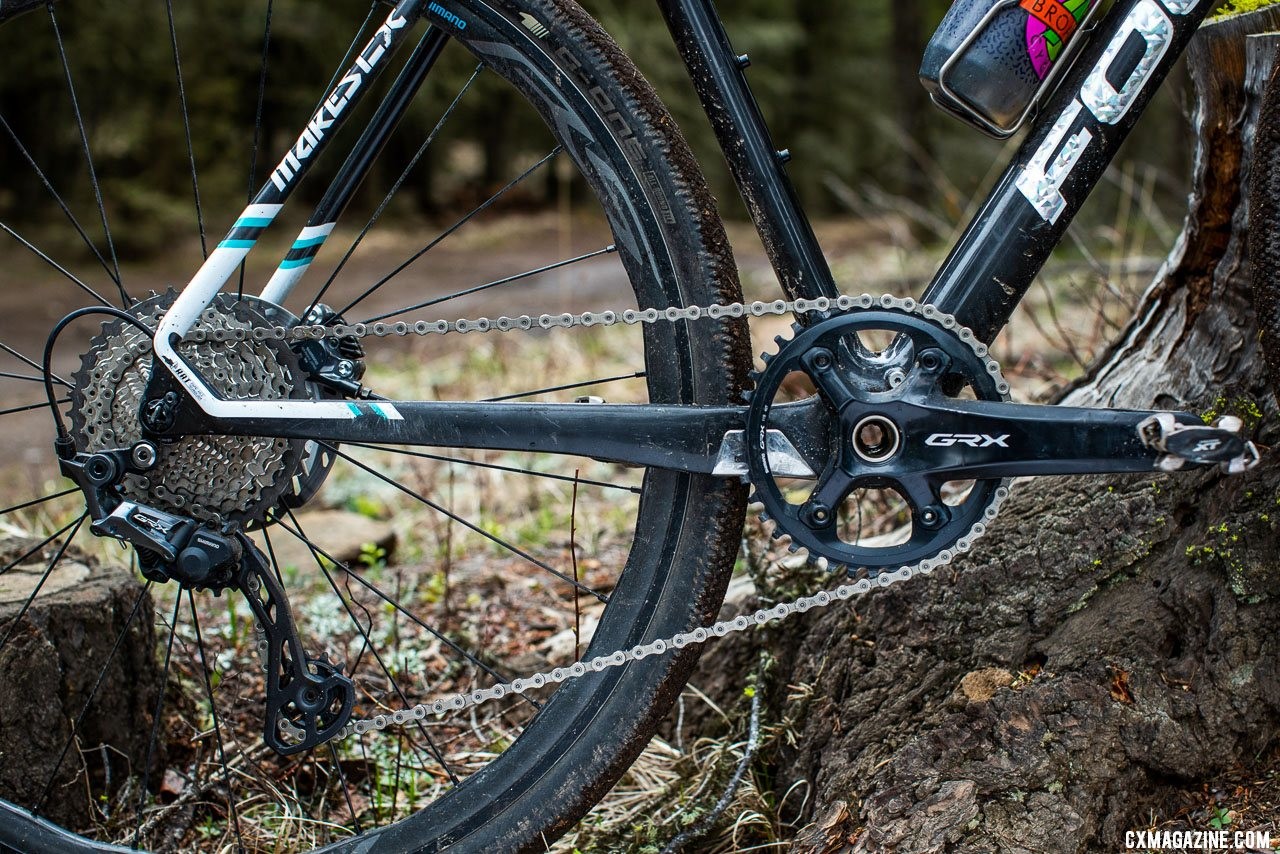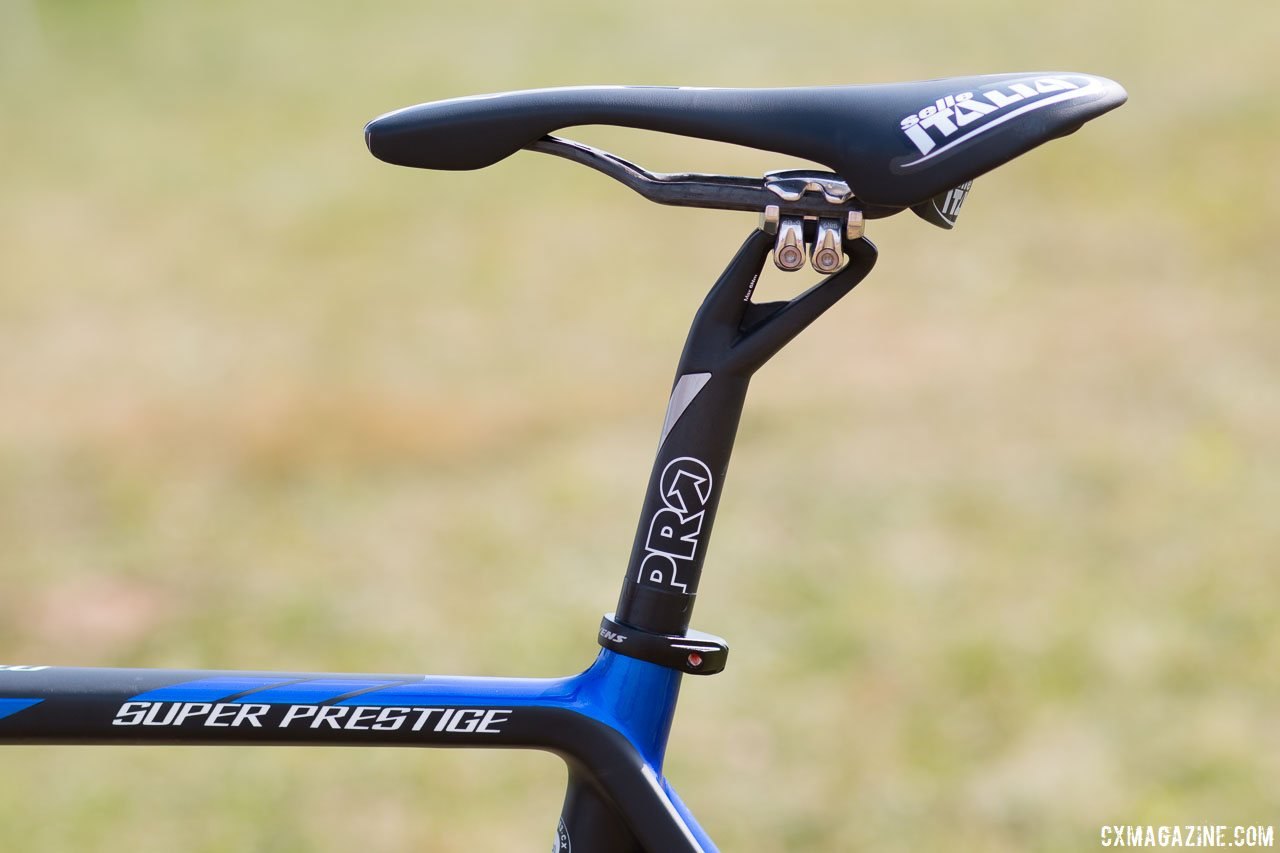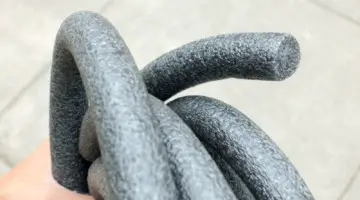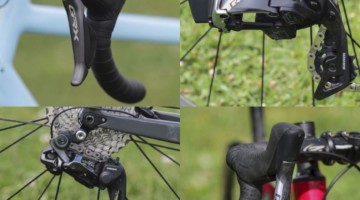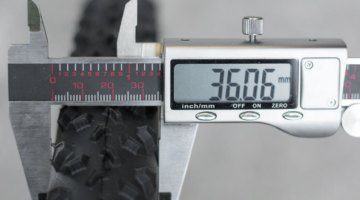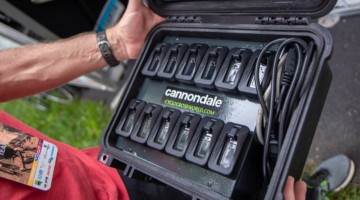Chris McGovern is a dual threat in the cyclocross world as both a coach and bike builder. Earlier this summer, we chatted with McGovern about some training tips and his new position with Forever Endurance.
Today for Mechanical Monday, we are diving into McGovern’s other skillset on the technical side.
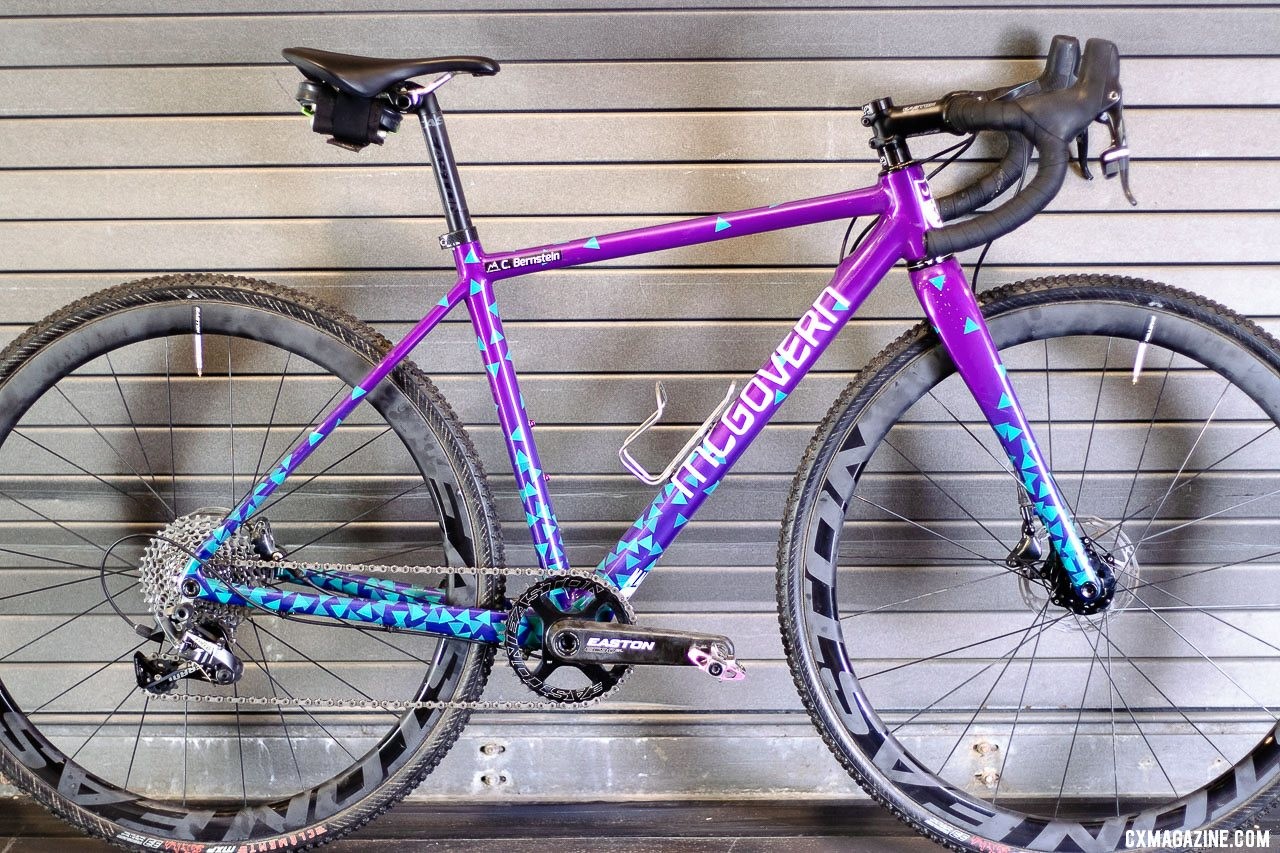
As the name on the down tube suggests, Chris McGovern knows a thing or two about the technical side of bikes. 2019 NAHBS Sacramento. © A. Yee / Cyclocross Magazine
Even though #crossiscoming still abounds as a social media hashtag, the cyclocross season seems to come quicker than expected for many of us. Whether you have been using your bike as a cyclogravel bike or not, just pulling it out of the garage come September 1 can leave you with a bike that is not ready for the rigors of the ’cross season.
In part to help us get ready for the coming season (asking for a friend is back!), we threw some questions McGovern’s way that cover bike maintenance, tire choices and bike setup.
If you have more questions, drop them in the comments, or you can reach McGovern on social media on Instagram @mcgoverncycles and Twitter @Chris_McGovern.
Mechanical Monday: Chris McGovern Takes Our Bike Questions
Question: What are some important things to look for when shopping for a new cyclocross bike, either new or used?
Chris McGovern: I think the top three things for me would be:
- Fit. Make sure it fits. There shouldn’t be inches of steer tube spacers, 400mm of seat post or a bunch of toe overlap on a frame that is too small. And the opposite is true, the frame shouldn’t be too big.
- Tire clearance. Is there enough room for a ’cross tire and mud? Is there room for a bigger tire (gravel) if you do that too?
- Drivetrain setup. Does this bike meet your needs for 1 or 2 chain rings, depending on preference and use?
Question: Used cantilever bikes can be good budget intro bikes, but is there a race category or experience level where upgrading to a bike with disc brakes becomes more of a necessity?
CM: I held on to cantis for a long time, but I think it’s clear that discs are better for cyclocross. I am sure I am going to get some flak over this, but I think you should get on discs as soon as your budget allows.
Question: Are there other more important upgrades? Wheels? Carbon frame?
CM: If you are committed to rim brake, then invest in your wheel and tire quiver. I don’t think carbon rims make much sense in this situation.
Question: With ’cross season starting in the next few weeks, what are some commonly overlooked bike maintenance things before the season starts?
CM: There are several things I think are worth looking at closely.
- Cables, pads and housing for mechanical and cable-actuated brakes
- Fluids, pads and electronic systems for hydro/electronic systems
- Tire condition, glue and sealant
- Chain, cassette, chain ring wear
- Fresh bar tape
Question: For the less mechanically inclined, what are some of the minimum things they should be doing to maintain bikes during the cyclocross season?
CM: Keep your bikes clean and lubed. When the bike isn’t working well, don’t wait to take it into the shop; an ounce of prevention can save you a lot of money.
Also, start working with a good mechanic in your town. Build a relationship with them so that they understand what you are doing and what you need day in and day out with your bikes.
It sounds weird, but there are good shop mechanics who don’t understand the demands of ’cross or a rider’s particular needs. I believe that this relationship can be built, but it takes some communication and some listening.
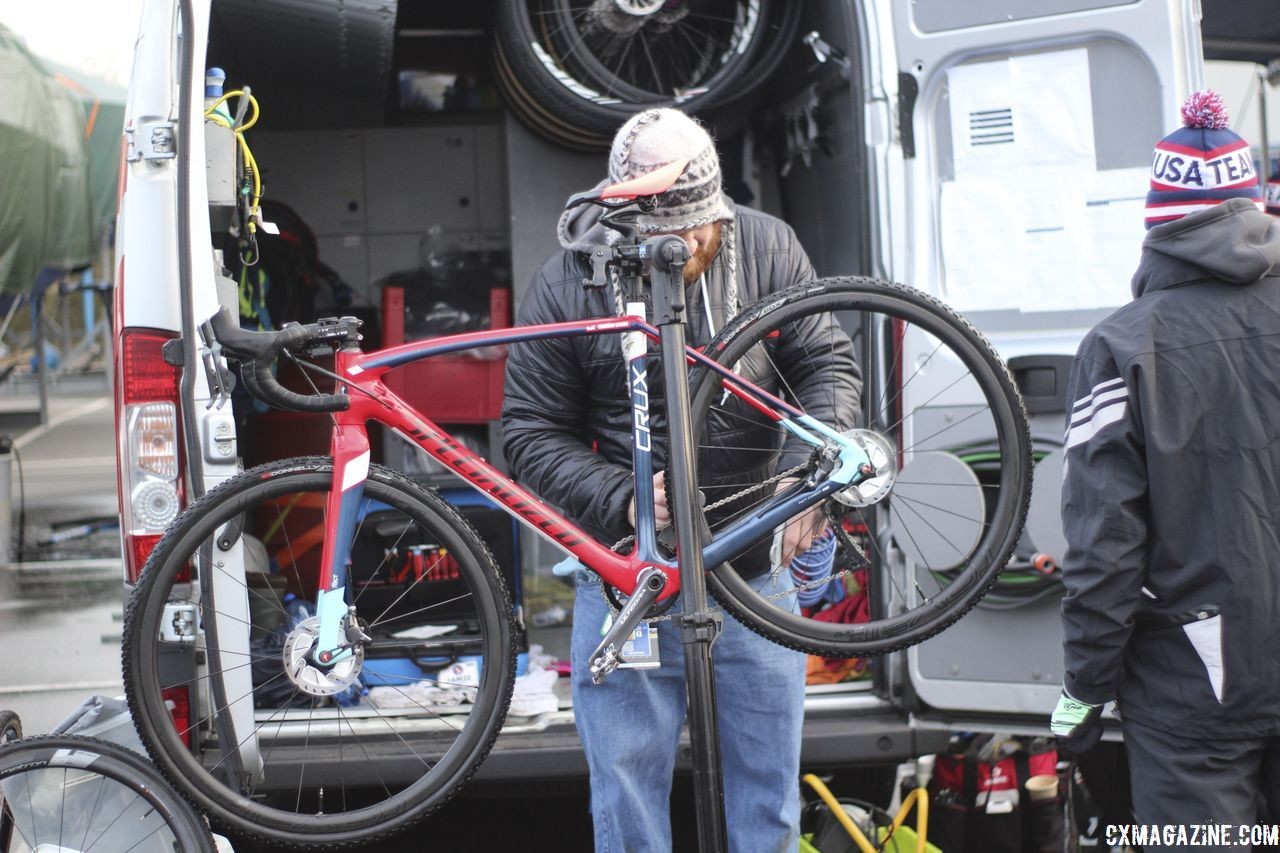
McGovern recommends finding a mechanic who understands cyclocross and building a relationship with them. 2019 Bogense World Championships Course Inspection, Friday Afternoon. © Z. Schuster / Cyclocross Magazine
Question: If someone’s bike is too long or too short (for whatever reason) what are some ways to get a better fit until they can get a new bike?
CM: Well, stem, seatpost and spacers.
Question: If I am going to go with tubulars for the first time this year, what kind of tread should I get?
CM: If you are limited to one tread, I say go with intermediate tread. Look for one that doesn’t have to heavy or tall of a tread, like the Challenge Grifo.
I would also say practice riding them. Most will treat them as “race only,” but I think even if you end up flatting a tubular in training, it is worth the knowledge gained about how to use the tire in a race.
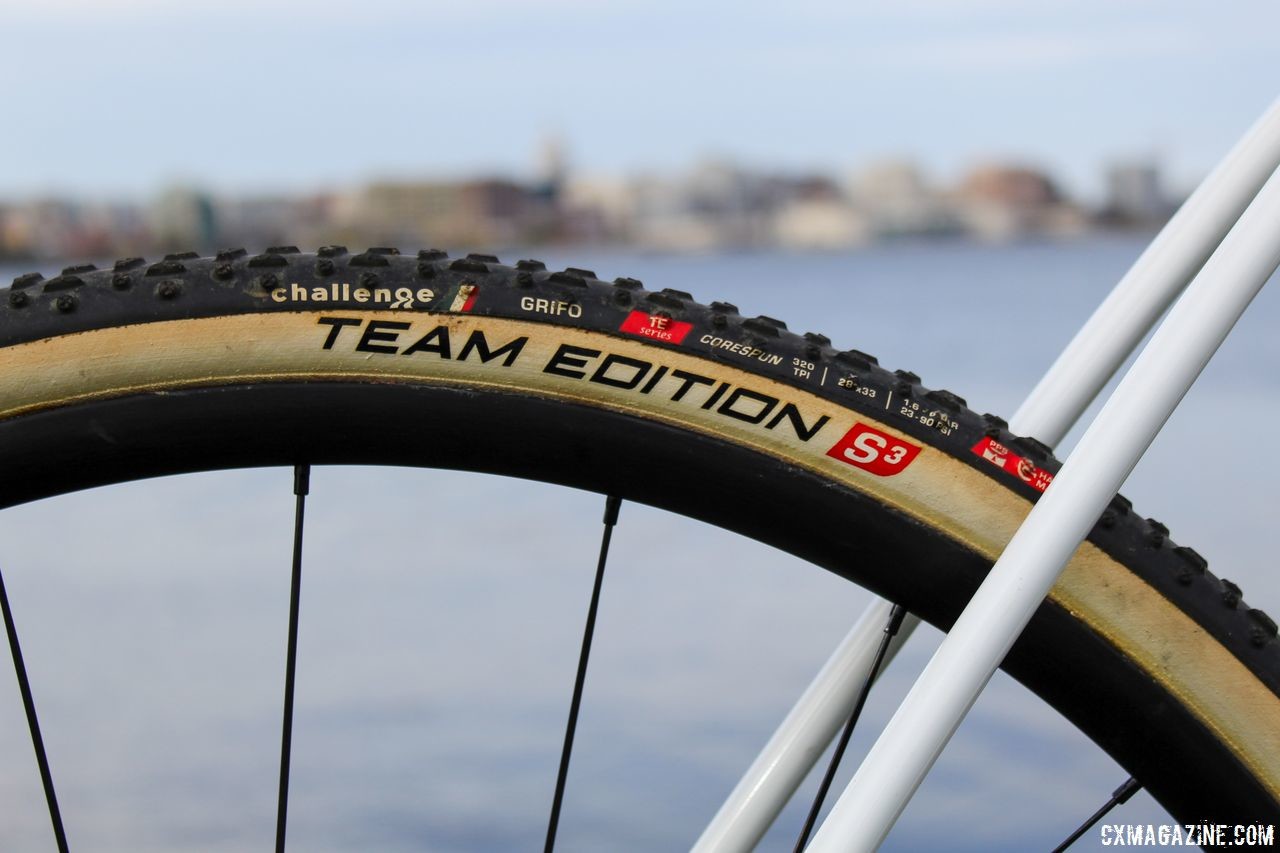
Challenge Grifo’s are one intermediate tread option McGovern recommends if you have one set of tubular tires. Trek Boone RSL Cyclocross Frameset and Bike. © Z. Schuster / Cyclocross Magazine
Question: Should I pay a shop to glue my tires or is that something I can and should do myself? Do you have a recommended method?
If you live by a shop that is experienced at gluing tires and you don’t want to do it, then a shop is a good option. I have seen some $75 glue jobs that were terrible and peeled right off at low pressure. Gluing ’cross tires is different than a road or track tubular. I would ask around to see what kind of experiences others have had with your local shops.
Gluing your own? Thin layers is the key.
I have been gluing cyclocross tires on since 1987 and the only thing I have changed over those years is tubular tape. I have been using cyclocross tape since it was first introduced.
So, thin layer of glue on clean rim and tire. Tape on rim over first layer of glue. Second thin layer on rim and tire. Third layer on rim, with a third layer on tire, as a positioning layer, before you mount it.
How much time in between layers depends. I have used as little as 30 minutes in between layers and 24 hours in between. I couldn’t really tell any difference, but I think there are a lot of variables in the timing. I feel like I am over simplifying, but it is that simple.
Question: For folks likely to do muddy races. do you think using my tubeless clinchers as a mud wheelset is a good idea?
CM: The tubeless tires continue to get better and better. Better treads, better rim interface, easier set up and little to no burping. So yep, I would totally recommend that.
When I worked for Donnelly Sports, my dream project was to have a system of a wheelset and three tubeless tire treads that would set up at the car. Think about that!
The biggest challenge is tubeless doesn’t ride “like” a tubular. And in my experience, you can’t set up a tubeless cross tire (pressure wise) as a tubular. So you need to learn how to set up and ride that tire. That being said, I think you can make a tubeless tire do whatever you need it to do.
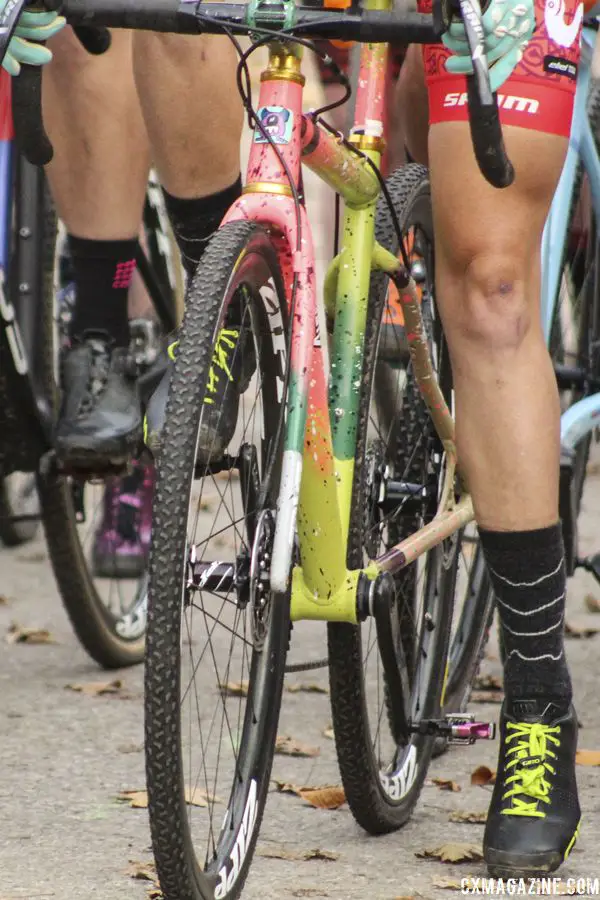
We saw the Squid Squad go fully tubeless last cyclocross season. 2018 Pan-American Cyclocross Championships, Midland, Ontario. © Z. Schuster / Cyclocross Magazine
Question: I’ve heard a bit about running a wider handlebar. What are the benefits of going to, say, a 44cm from 42cm? Are there benefits for staying narrower?
CM: I am of the school that your bars should match your shoulder width. More leverage with a wider bar, eh? More aero with a narrow bar, eh? I say run the bar that fits your body.
Question: Shimano now has a full set of components with a clutch derailleur in the GRX family. What do you think about running GRX for cyclocross?
CM: Run what you brung, if you have it, why not? I have briefly looked at the group and it looks to be an economical option that addresses some of the issues ’cross gives traditional Di2 setup, particularly 1x setups.
Question: In the past, we’ve seen Mathieu van der Poel use a very forward saddle position. Is that an advantage for ’cross or just personal fit and preference?
CM: I have also heard that he runs 170mm cranks for ’cross. I have no idea what he uses for road, but I am interested about the crank length.
With that said, I think you see “’cross” positions being more forward as opposed to “road” positions for a few reasons. Moving the rider’s hips forward creates a different center of gravity and allows for more forceful, quicker downstroke with the crank (Is that where the 170mm cranks come into play for MvdP?) and more weight on the hands for handling.













